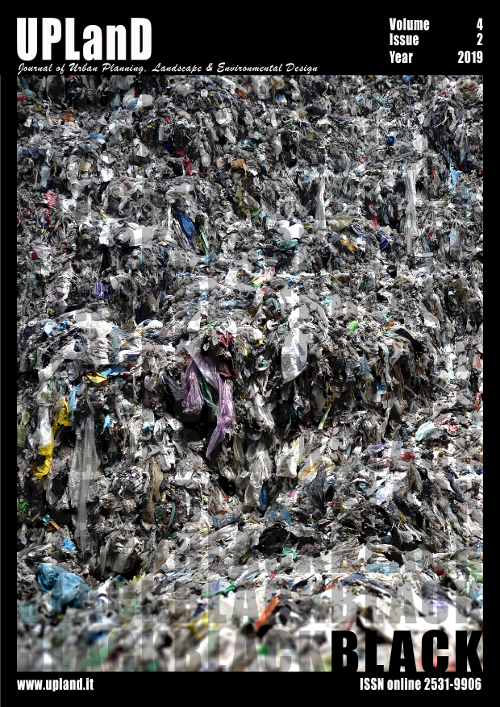Common Stocks: Intelligent Communities Enabling Platforms for peripheries regeneration
Main Article Content
Abstract
The huge stock of properties and territorial infrastructures that we have built in recent years, convinced that it was the most important development asset, capable of generating value, is today largely degraded, underused or dismissed. In Sicily, as in many other parts of Italy, some practices have allowed new spaces for public use and/or semi-public, and most cities have opened new development perspectives. This process of recycling seems to indicate a tendency to shift the development asset from real estate capitalization to a knowledge economy, in which abandoned assets offer themselves as enabling platforms for collective actions, space devices in which to channel innovation through recycling.
This paper studies the process of common-stocks projects as part of sustainable strategies for peripheries regeneration. The study describes an empirical research conducted on the Sicilian case study of Periferica in Mazara del Vallo and investigates how overcoming the fragmentation of initiatives, guiding processes, recognizing, enabling and involving the subjects that bring innovation.
Downloads
Article Details

This work is licensed under a Creative Commons Attribution-NonCommercial-NoDerivatives 4.0 International License.
Authors who publish with this journal agree to the following terms:- Authors retain copyright and grant the journal right of first publication with the work simultaneously licensed under a Creative Commons Attribution License that allows others to share the work with an acknowledgement of the work's authorship and initial publication in this journal.
- Authors are able to enter into separate, additional contractual arrangements for the non-exclusive distribution of the journal's published version of the work (e.g., post it to an institutional repository or publish it in a book), with an acknowledgement of its initial publication in this journal.
- Authors are permitted and encouraged to post their work online (e.g., in institutional repositories or on their website) prior to and during the submission process, as it can lead to productive exchanges, as well as earlier and greater citation of published work (See The Effect of Open Access).
References
Carta, M. (2018). Polipheries: Heterotopic Cities and Plural Communities of a Different Present in Southern Europe. In J. Schröder, M. Carta, M. Ferretti & B. Lino (Eds.), Dynamics of Periphery. Atlas for Emerging Creative Resilient Habitats (pp. 30-49). Berlin, DE: Jovis Verlag GmbH.
Marini, S. (2015). Storie dall’Heritage. Il tempo della lumaca. In M. Carta & B. Lino (Eds.), Urban Hypermetabolis, (pp. 53-55). Roma, IT: Aracne.
Moulaert, F., MacCallum, D., Mehmood, A., & Hamdouch, A. (Eds.) (2013). The International Handbook on Social Innovation: Collective Action, Social Learning and Transdisciplinary Research. Cheltenham, UK: Edward Elgar.
Ombuen, S., Calvaresi, C., De Leo, D., & Fioretti, C. (2017). Oltre le periferie: verso una strategia nazionale per la rigenerazione urbana. In A. Balducci, O. De Leonardis & V. Fedeli (Eds.), Urban@it. Secondo Rapporto sulle città. Le agende urbane delle città italiane (pp. 213–227). Roma, IT: Il Mulino.
Secchi, B. (2013). La città dei ricchi e la città dei poveri. Roma-Bari, IT: Laterza.
TEPSIE (2013). Social Innovation Theory and Research: A Summary of the Findings from TEPSIE. A deliverable of the project: “The theoretical, empirical and policy foundations for building social innovation in Europe” (TEPSIE), European Commission – 7th Framework Programme. Brussels: European Commission, DG Research.
Van Dyck, B., & Van den Broeck, P. (2013). Social innovation: a territorial process. In F. Moulaert, D. MacCallum, A. Mehmood & A. Hamdouch (Eds.), International handbook on social innovation: Collective Action, Social Learning and Transdisciplinary Research (pp. 131–141). Cheltenham Glos, UK: Edward Elgar Publishing.
Zajczyk, F., Borlini, B., Memo, F., & Mugnano, S. (2005). Milano. Quartieri periferici tra incertezza e trasformazione. Milano, IT: Bruno Mondadori.

